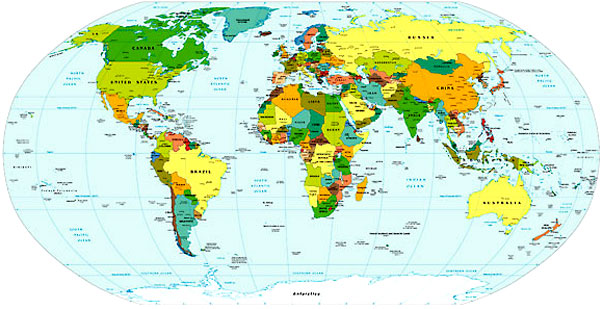 The Marshall Islands—or the Republic of the Marshall Islands—gained independence from the USA in 1986. While independence came on 21 October of that year, on 1 May they celebrate their Constitution Day.
The Marshall Islands—or the Republic of the Marshall Islands—gained independence from the USA in 1986. While independence came on 21 October of that year, on 1 May they celebrate their Constitution Day.The islands were first seen by the Spanish in the 16th century, though it was with the arrival of their namesake, the British Captain John Marshall, that the islands were really, so to speak, put on the map.
Like a lot of colonial nations, the islands changed hands a few times before they became independence—first the were a protectorate of German New Guinea after a German trading company settled on the islands; in World War I the Japanese conquered the islands, administering them until, in World War II, the US invaded and occurring the islands and came under US protection. Though independence wasn’t formalised until 1986, self-government took effect in 1979.
 The nation consists of 29 atolls and 5 islands. The US still provides government assistance, which is important to the Marshallese economy. Important commercial crops on the islands are coconuts, tomatoes, melons and breadfruit. English is an official language of the nation, but Marshallese is the language predominantly used in the country.
The nation consists of 29 atolls and 5 islands. The US still provides government assistance, which is important to the Marshallese economy. Important commercial crops on the islands are coconuts, tomatoes, melons and breadfruit. English is an official language of the nation, but Marshallese is the language predominantly used in the country. I couldn’t find a poem from or about the Marshall Islands in all my searches. What I have to offer instead is a Marshallese creation myth—I find it fascinating. The story was told by Litarjikût Habua and interpreted by Jetnil Felix, at Mâjro in 1951. I got to the story online here.
Story of the Heaven Post Men
There were four men: Lajibwinâmôn, Lokomraan, Lorok and Irook Ralik. They made heaven posts by standing up and holding heaven. They stood up all the time to keep heaven from falling. Lajibwinamon is the north post, Lokomraan is the east post, Lorok is the south post, and Irooj Ralik is the west post.
The north post man eats people. The east post an makes light. Lorok supplies food for the world. And Irooj Ralik made the irooj bwij. The north man fell down and went to sleep to the north. The man in the east got tired and went to sleep and fell to the east. Lorok fell south. Irooj Ralik fell to the west.
These men had power before but did not use it. They were too busy holding up the sky. When they fell down they used their power.
The morth man used his power to make people die. (There had been no death before this.) “Kol e”: he used his power to kill (by his voice). He swallowed by the power. People’s bodies came into his mouth when he made a sound: “I want to a man to eat!” A man would come and he would eat him. (Marshallese would not move a sick person to the north. To the south it was all right. Also to the east and west it was all right. This is still done.)
Lokomraan: his work was to make light, the day. He wanted to help Lorok, to make light so that Lorok would make food for the people. If Lokomraan had not made light, Lorok would not have time to make food.
Lorok had to make food twice a year: iien rak: rak ma; anonean: bob and makmak.
Irooj Ralik was the first irooj. He made the bwij or irooj. Lorok and Lokomraan made ekkan to him. They gave him everything: days and food.
Irook Ralik stayed at Ep, an underworld place. (Some people say that Ep is in the Palau Islands. I say that it is not.)
There are still north, east, south and west. Light and food. People die. And there are irooj now.
These four men: three agreed to world together, but Lajibwinamon was against the others. He killed people, caused sin, and so forth (like Satan). The three agreed to help people to live well and happily—to learn and so forth. It is not clear to me how Irooj Ralik started the irooj bwij.
Marshallese terms:
irooj bwij: lineage or clan
iien rak: summer
rak ma: breadfruit time
anonean: winter
bob: pandanus
makmak: arrowroot
ekkan: tribute of food and other goods.
from the book Stories from the Marshall Islands: Bwebwenato Jan Aelon Kein


No comments:
Post a Comment